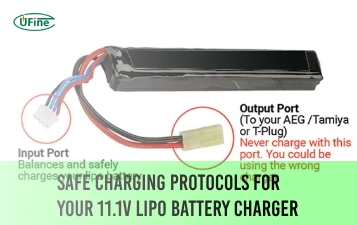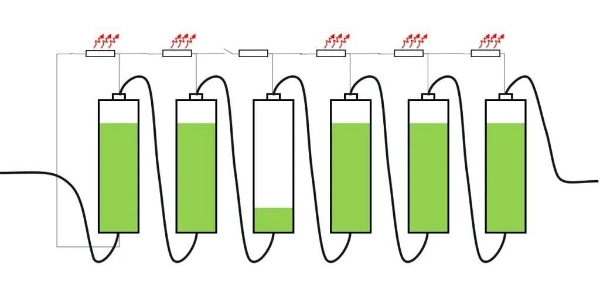Lithium-ion battery packs have become increasingly popular due to their high energy density, longer lifespan, and lightweight nature. Various applications, including electric vehicles, portable electronics, and renewable energy storage systems, widely use them. However, to ensure optimal performance and safety, it is crucial to address one of the critical challenges associated with lithium-ion batteries: cell balancing.
Part 1. The need for lithium-ion battery packs
Before diving into cell balancing, let’s first understand why lithium-ion battery packs are in high demand. Compared to traditional lead-acid batteries, lithium-ion batteries offer several advantages. They have a higher energy density, allowing them to store more energy in a smaller, lighter package. This makes them ideal for applications where weight and size are critical factors, such as electric vehicles and portable devices.
Furthermore, lithium-ion batteries have a longer lifespan and a lower self-discharge rate. They can be recharged hundreds, if not thousands, of times without significant degradation in performance. This makes them cost-effective in the long run and reduces the environmental impact associated with frequent battery replacements.
Part 2. What is cell balancing?
Cell balancing is a technique used to equalize the charge levels of individual cells within a lithium-ion battery pack. In a typical battery pack, multiple cells are connected in series or parallel to achieve the desired voltage and capacity. However, due to manufacturing variations and operational conditions, these cells may exhibit slight differences in their capacity and voltage characteristics.
Cell balancing addresses these imbalances by redistributing the charge among the cells, ensuring each cell operates within its optimal voltage range. This helps maximize the overall capacity of the battery pack and prevents individual cells from becoming overcharged or over-discharged, which can lead to reduced performance, decreased lifespan, and even safety hazards.
Part 3. Why is cell balancing necessary in lithium-ion battery packs?
Cell balancing is necessary in lithium-ion battery packs for several reasons.
Preventing Cell Drift
Firstly, cell imbalances can lead to a phenomenon known as “cell drift,” where specific cells become consistently overcharged or over-discharged compared to others. This drift can accelerate the degradation of the affected cells, resulting in reduced overall battery capacity and shorter lifespan.
Improving Performance
Secondly, cell imbalances can cause a decline in the battery pack’s performance. When connecting cells with different charge levels in series, the cell with the lowest charge limits the overall voltage output of the battery pack. People commonly refer to this phenomenon as the “weakest link” effect. Cell balancing helps mitigate this issue by ensuring that all cells operate at a similar charge level, thereby maximizing the overall performance of the battery pack.
Ensuring Safety
Lastly, cell imbalances can pose safety risks. Overcharged cells can lead to thermal runaway, where the battery pack heats up uncontrollably and may even catch fire or explode. On the other hand, over-discharged cells can experience voltage reversal, which can also lead to safety hazards. Cell balancing helps prevent such imbalances, reducing the likelihood of safety incidents and enhancing the overall reliability of the battery pack.
Part 4. Cell balancing methods
Various methods are employed to achieve cell balancing in lithium-ion battery packs. Here are some commonly used techniques:
1. Passive Balancing
Passive balancing is the simplest and most cost-effective method. It involves using passive components, such as resistors or diodes, to divert excess charge from cells with higher voltages to cells with lower voltages. Passive balancing is relatively straightforward but may result in energy losses and can be less effective when significant voltage differences exist among the cells.
2. Active Balancing
Active balancing utilizes more sophisticated circuitry to transfer charge between cells actively. This method typically employs switches and control algorithms to monitor and equalize the charge levels. Active balancing offers higher efficiency and better balancing accuracy compared to passive balancing. Advanced battery management systems commonly use it to handle more significant voltage differentials efficiently.
3. Hybrid Balancing
Hybrid balancing combines the benefits of both passive and active balancing methods. It uses passive balancing as the primary method but incorporates active balancing for cells that require more precise balancing. This approach balances cost-effectiveness and balancing accuracy, making it a popular choice for many battery pack applications.
Part 5. Benefits of cell balancing
Proper cell balancing in lithium-ion battery packs brings several significant benefits:
Enhanced Battery Performance
Cell balancing ensures that all cells operate at similar charge levels, maximizing the overall performance and capacity of the battery pack. This leads to improved efficiency and longer operational times.
Extended Battery Lifespan
By preventing cell drift and overcharging or over-discharging, cell balancing helps extend the lifespan of the battery pack. This reduces the need for frequent replacements and lowers the overall cost of ownership.
Improved Safety
Cell balancing minimizes the risks associated with overcharging, over-discharging, and voltage reversal. It helps maintain a safe operating environment for the battery pack, reducing the likelihood of safety incidents.
Optimal Energy Utilization
Balancing the charge levels among cells ensures optimal utilization of the available energy in the battery pack. This translates to better energy efficiency and improved overall system performance.
Part 6. Application of cell balancing
Various industries and sectors utilize cell balancing in applications involving lithium-ion battery packs. Some notable applications include:
Electric Vehicles (EVs)
EVs heavily rely on lithium-ion battery packs for their power source. Cell balancing maximizes the EV’s battery pack’s range, performance, and longevity, ensuring a smooth and efficient driving experience.
Portable Electronics
From smartphones and tablets to laptops and wearables, cell balancing is essential for optimizing the performance and longevity of batteries in portable electronic devices. It helps maintain consistent battery life and ensures reliable operation throughout the device’s lifespan.
Renewable Energy Storage
The use of lithium-ion battery packs for storing energy generated from renewable sources, such as solar and wind power, is increasing. Cell balancing ensures efficient energy storage and retrieval, contributing to the stability and reliability of renewable energy systems.
Medical Devices
Many medical devices, including implantable devices and portable medical equipment, rely on lithium-ion battery packs. Cell balancing is critical in ensuring these devices’ safe and reliable operation, as they often have stringent power delivery and longevity requirements.
Part 7. Conclusion
To sum it up, cell balancing is super essential for getting the most out of lithium-ion battery packs. By ensuring each cell has an equal charge, cell balancing boosts energy efficiency, amps up safety, and extends the overall lifespan of the battery pack. Whether we’re talking about electric vehicles, renewable energy storage, or our trusty portable gadgets, implementing cell balancing methods is a game-changer. It’s all about tapping into the full potential of lithium-ion batteries and paving the way for a greener, more efficient future.
Related Tags:
More Articles

Safe Charging Protocols for Your 11.1V LiPo Battery Charger
Safely charge your 11.1V LiPo battery by following proper rates, using safety tools, and avoiding common charging mistakes.
11.1 V LiPo Battery Airsoft: Boosting Field Performance
Upgrade your airsoft gun with an 11.1V LiPo battery for faster firing, longer runtime, and top-tier performance on the battlefield.
Batteries for Trolling Motors Lightweight vs. Leaf Blower Power
Explore the best lightweight trolling motor batteries and how they compare to leaf blower power for performance, portability, and runtime.
What Is a 2C Battery?
Learn what a 2C battery is, how C-rates affect performance, and how to calculate the number of batteries your device needs.
What Battery Does LED Strips Use?
Discover which batteries power LED strips best. Learn about voltage, capacity, battery types, and how to safely power your LED lighting projects.




